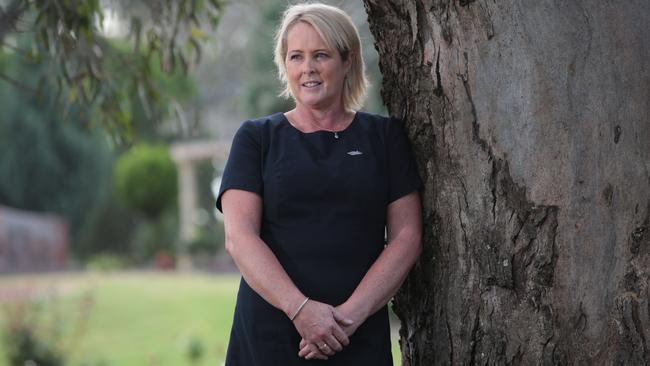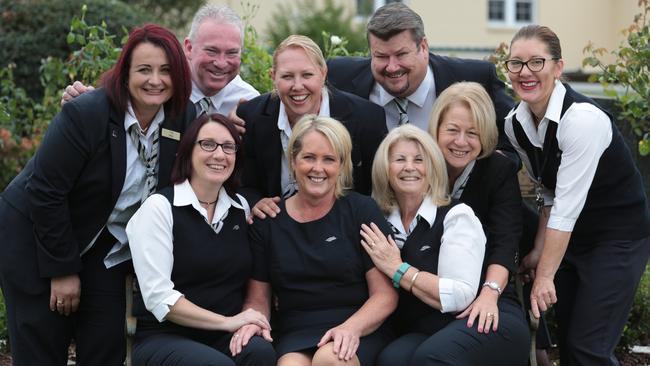How did this woman survive two brain aneurisms and seven mini strokes?
JODIE RUSHTON is lucky to be alive. She suffered two brain aneurysms followed by seven mini strokes, five brain surgeries and spent five days in an induced coma. How is she still alive?

Southwest
Don't miss out on the headlines from Southwest. Followed categories will be added to My News.
- He’s an unlikely hero
- Wests Tigers’ $22 million slap in the face
- Shark warning signs installed at Chipping Norton Lake
- Western Sydney campus for Wollongong uni
JODIE RUSHTON is lucky to be alive. On October 22 she suffered two brain aneurysms. She walked in the door of her Spring Farm home and collapsed.
She was rushed to Liverpool Hospital and in the space of five weeks had seven mini strokes, five brain surgeries and spent five days in an induced coma.

Ms Rushton got home from work, put her bag down and collapsed. Her son thought she’d hit her head and fallen, so went next door to the neighbour that was a trauma nurse.
The off-duty trauma nurse called Triple Zero after realising she had suffered a brain aneurysm. Within minutes there were two ambulances, nine police cars and a helicopter on their way to her home.
“I was lucky. My son normally isn’t home at that time of day, but he had no petrol in his car so wasn’t going anywhere,” Ms Rushton said.
“They told me I was vomiting blood when it happened and was refusing to go to hospital — I don’t remember any of that.
“The last thing I remember is leaving work, then waking from the coma.”
Ms Rushton was put into an induced coma in the ambulance, on her way to Liverpool Hospital. She stayed in that state for five days before she was gradually brought out of it.
“I don’t really remember waking up saying anything, but I remember seeing everyone’s faces,” she said.
“I remember when they gave my family my prognosis after the aneurysms, strokes and surgeries — I was destined for a nursing home.”

“I feel a bit traumatised by it all. I was so close to it (dying),” she said.
“I don’t remember much of what happened, but hearing it from my children and partner, telling me as they pushed through tears, it was tough.
“Every time I went in for surgery, they (loved ones) were told to say ‘goodbye’ to me.”
Ms Rushton spent eight weeks in hospital and at a brain injury transitional home, before being released to her home on December 22.
Her colleagues at Forest Lawn Memorial Park, friends, family and old school friends from the Liverpool area raised enough money to pay her bills while she recovered.

The fundraiser was held late-November. Ms Rushton was able to get out of hospital that day to attend the event.
“There was no way I was going to miss out on my own celebration,” she said.
The fundraising allowed all of her bills to be paid while she recovered. For that, Ms Rushton doesn’t know how to say ‘thanks’.
“I don’t know how to say thank you to everyone that has helped me,” she said.
“I really am lucky to be alive.”
Today, Ms Rushton is back to normal and said the only difference was her hairstyle; a little shorter in patches due to the operations.
“And when I got my driver’s license back a month ago, I knew coming back to work was definitely going to be an option,” she said.

It has taken six months for the mother of two to return to work. Monday was her first day back with the team from Forest Lawn Memorial Park.
She turns 50 later this year and plans to have a big celebration, inviting everyone that helped during her recovery, to say ‘thanks’.
BRAIN ANEURYSM
● Abnormal swelling or bulge in the wall of a blood vessel
● Can occur anywhere throughout the circulatory system, but most commonly develop along the aorta and in blood vessels of the brain
● Potentially fatal if they rupture
● A cerebral aneurysm is repaired using coils or a stent, or by surgery where the aneurysm has been clipped. This helps prevent future ruptures
● Brain Foundation Australia data reveals that more than 40 per cent of patients die from the initial bleed or later complications and others eventually recover with little or no permanent disability
● Around one third of all people who experience a ruptured cerebral aneurysm die, and less than 30 per cent get back to a pre-rupture state


